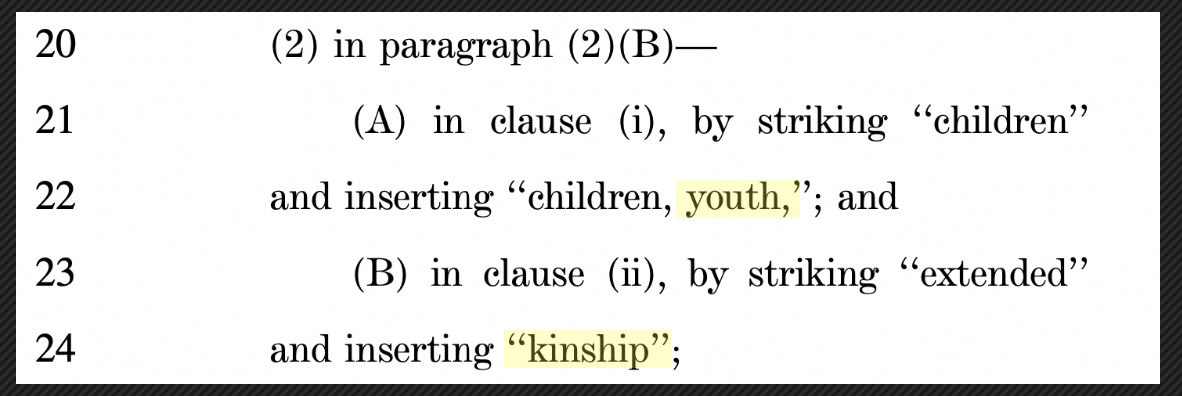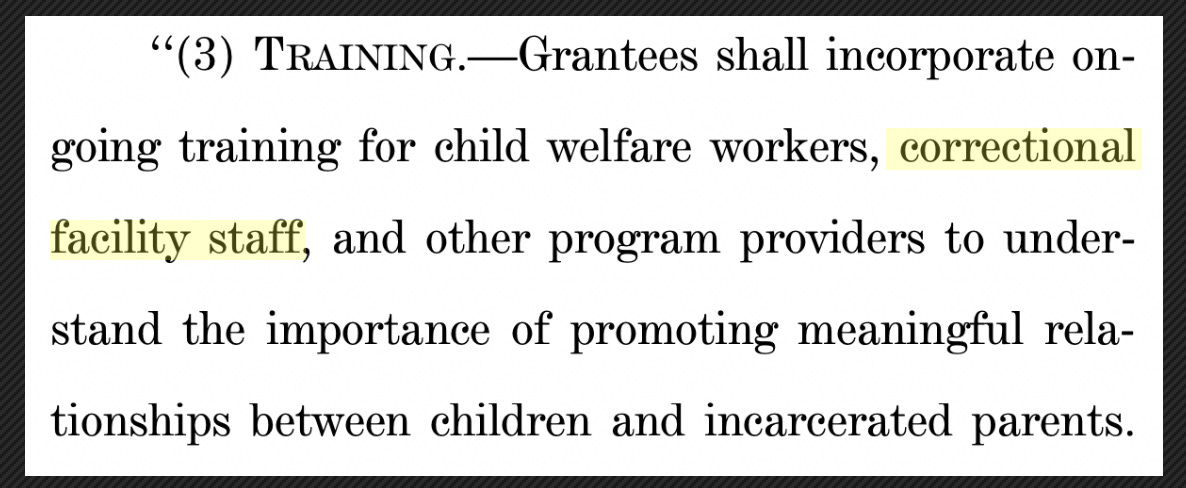Today (August 20th), Congress received the full text of the 'Protecting America’s Children by Strengthening Families Act,' after it was passed last month with unanimous approval by a 38 member House Committee. The name of the bill caught my eye so I decided to do something which members of Congress almost never do. I read it—all of it. Having done so, I figured it would be a good opportunity to jump back on the proverbial saddle and report on the content. After all, reading through 63 pages of federal legislation isn’t everyone’s cup of tea. It does, however, happen to be mine.
Vodka helps.
The expansion of powers that the passing of this bill would grant to the government concern anyone responsible for the well-being of a child in the United States. The ability of federal Child and Family Services Programs to terminate parental rights and remove children from their communities would expand enormously. The age of government supervision for individuals unlucky enough to have found themselves trapped ‘in the system’ would rise to 26 years old, children would be granted even more medical rights in absence of the consent of their parents, and money that may have gone towards actual child welfare would find itself familiarly circling down the drain.
The inevitable increase in institutionalization and incarceration probably ingratiate those who’d stand to profit to the bill’s suggested increase in funding to the programs, which already receive an annual $345,000,000. If the bill passes—based on the support recently given by the House Committee, it’s likely to—the amount would raise to $420,000,000 (pg.3). That’s nearly half a billion dollars every year until 2029 devoted by-and-large to violating the rights of children and families.
Now let me justify that claim.
The aforementioned funding would continue to be dolled out via grants. Of course, in order for an application to be approved, there are requirements that have to be met. That, in-and-of itself, would be perfectly reasonable if they weren’t so vague and, for lack of a better term, ridiculous. The positive side to this is that if you actually read the bill, the corrupt financial motivations are made evident by the flimsy nature of the language used to describe the requirements.
The following excerpt from page 27 provides just one of many examples. The first issue is how exactly one might define “constructive relationship” in this context since a constructive relationship would necessarily have some identifiable goal—if I were to take a child to a math class, a constructive relationship between the instructor and the child would culminate in a demonstrable improvement in their ability to solve math problems. Ignoring to the best of my ability the absolute slaughtering of the English language executed in this bill, the stated requirements lack any concrete measure of ensuring that programs receiving the grants are legitimate.
Probably because they’re not.
Corrupt financial practices are nothing new, but “kinship caregivers” are. Traditionally they would be defined as extended family or close community members, but academic sociologists such as the late D.M. Schneider of the University of Chicago developed an expanded understanding of the term in the form of “fictive kin.” The idea is that shared ideological, cultural, social similarities can also qualify as grounds for legitimate kinship. If you can’t tell where this is going, allow me to share a paper on the matter from the American Bar Association. Now take a look at some of the surnames on this paper and it’s likely you’ll realize my implication. In any event, I’m sure they’re not lacking in litigation opportunities.
Making it worse is that this ‘fictive kinship’ is exactly the understanding held by the government, at least according to childwelfare.gov. It’s also one of the main topics of the new bill which aims to codify in law the ability for adults who have no familial relations or any other qualifications, unfettered access to presumably already unfortunate children.
The 46 year old single man and the 7 year old boy are probably just really close friends. You know, since they run in the same social circles.
It’s almost like they don’t understand that most children tend to actually like their parents, even if they do smoke weed or party on the weekends. They can’t imagine the creepy old man who sniffs their hair in public might be a far worse option. Maybe they’ve grown accustomed.
The bill also highlights the importance of reducing the “burden” these children place on caseworkers by increasing recruitment and retention efforts to increase the total number of social workers. More room-temperature IQ women on the payroll is bound to benefit the country.
The rhetoric regarding children on Indian Reservations, contrary to the summary of the bill, has very little to do with its actual content. The proposed logic regarding the relocating of Native American children and potentially removing them from their respective reservations is as flawed than the legal precedent that allows it. Contrary to common understanding, moreover, the spirit of the laws regarding the original ICWA and the Department of the Interior, it still happens.
The bill articulates matters of social services on Indian reservations in a way which reverses the burden of proof standard that, at least should, be present in criminal law. It’s up to the family and community to prove that the government can’t take Native children, rather than the duty of the government to justify to a court that they ought to. This, unfortunately, is almost always the case when it comes to family law and social services. The 'Protecting America’s Children by Strengthening Families Act,’ perpetuates this problem.
The legislation then moves to propose federal funding for programs aimed at supporting relationships between children in government custody and their incarcerated parents, a rather common case. One might consider the alternative option of lowering the rates of incarceration which, after all, would eliminate the need for such programs in the first place, allowing such resources to be allocated elsewhere. The only problem with that idea is that almost 1 million of America’s least competent and most compliant citizens would then be out of work.
The concept that millions of federal dollars should go to programs with the express goal of “collaborating with correctional facilities to promote meaningful relationships” (pg. 48-49) is laughable to anyone who’s ever spent more than one night in jail, including anyone that’s ever worked in one. If the government had any genuine interest in fostering connections between inmates and their families, they would say to hell with the grants and programs and use that money to stop charging so much for inmate phone calls. We’re talking 35 million dollars here just for the incarceration programs (pg. 56).Lastly, concerning federal data collection, concerning the highly-regarded welfare of children, the bill insists on more inclusive reports on how much money they’re making on the approximate half million children being trafficked and profited from through residential facilities and adoptions (Sections 15, 16).
-M. Shultz for the Shultz Report, which isn’t going anywhere.
https://www.congress.gov/118/bills/hr9076/BILLS-118hr9076ih.pdf








